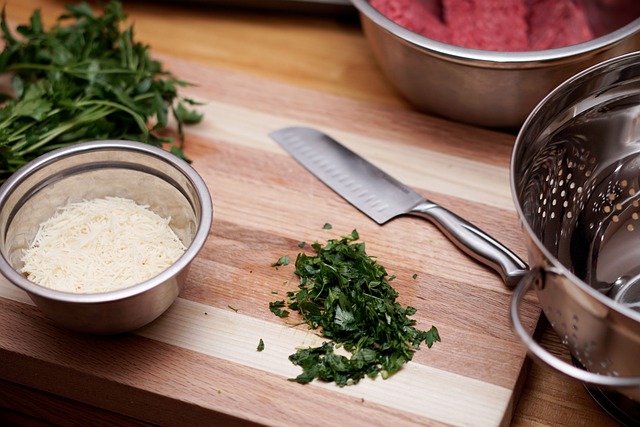
Situated at the center of any kitchen, the cutting board is a culinary workhorse that endures the rhythmic dance of chopping, slicing, and dicing. An indispensable partner during meal preparation, it also plays a crucial role in guaranteeing the safety and hygiene of your kitchen. This in-depth guide seeks to reveal the mysteries of proper cutting board maintenance, providing you with a road map to preserve these kitchen necessities for durability, cleanliness, and, most importantly, safety.
With proper care, a cutting board can last a lifetime and protect the health and safety of users. Whether you are an experienced chef or a home cook, this guide will equip you with the knowledge you need to choose the best cutting board, create efficient cleaning schedules, and put best practices to use when preventing cross-contamination. With these tips, you can turn your kitchen into a safe haven where every meal is not just a step toward cooking but also a healthier, cleaner, and more pleasurable experience.
From understanding material differences to implementing effective cleaning techniques, each section provides invaluable insights into the art of caring for your cutting boards. Let’s embark on a journey to elevate your kitchen safety and keep your cutting boards in top-notch condition.
See also our post on How to Clean and Organize Your Home Bar: Mixology Meets Neatness
Choosing the Right Cutting Board Material
1.1 Wooden Cutting Boards
Explore the characteristics of wooden cutting boards. Known for their aesthetic appeal and knife-friendly surface, wooden boards require specific care to prevent warping and bacterial growth.
1.2 Plastic Cutting Boards
Understand the advantages of plastic cutting boards. Durable, affordable, and dishwasher-friendly, plastic boards come in various colors to help prevent cross-contamination.
1.3 Bamboo Cutting Boards
Discover the eco-friendly aspects of bamboo cutting boards. With natural antimicrobial properties, bamboo is a sustainable and resilient choice that requires unique care considerations.
1.4 Glass Cutting Boards
Examine the pros and cons of glass cutting boards. While easy to clean and hygienic, glass boards can be harsh on knife blades and may pose safety concerns.
1.5 Rubber and Composite Cutting Boards
Learn about cutting boards made from rubber or composite materials. These innovative options often combine the best features of other materials, providing durability and knife-friendly surfaces.
Establishing Effective Cleaning Routines
Hot, Soapy Water
Master the basics of cleaning cutting boards with hot, soapy water. This simple yet effective method removes most contaminants and is suitable for various materials.
Vinegar and Baking Soda
Explore natural cleaning solutions using vinegar and baking soda. Ideal for eliminating odors and disinfecting, this DIY approach is particularly useful for wooden cutting boards.
Bleach Solution
Understand the proper use of a bleach solution for disinfecting cutting boards. Follow recommended ratios and techniques to ensure a safe and sanitized surface, especially for plastic boards.
Lemon and Salt Scrub
Discover a natural scrub using lemon and salt. Effective for removing stains and odors, this method is gentle on cutting boards while providing a fresh scent.
Mineral Oil for Wooden Boards
Appreciate the benefits of mineral oil for wooden cutting boards. Regular oiling helps maintain the board’s integrity, preventing cracks and creating a protective barrier against bacteria.
Preventing Cross-Contamination
Color-Coding System
Implement a color-coding system for different types of food. Assign specific cutting boards to categories like meat, vegetables, and fruits to prevent cross-contamination.
Separate Cutting Boards for Raw and Cooked Foods
Emphasize the importance of using separate cutting boards for raw and cooked foods. This practice minimizes the risk of bacterial transfer and ensures food safety.
Cleaning Between Uses
Incorporate cleaning between uses as a regular practice. Even during the same cooking session, taking a moment to clean the cutting board can prevent cross-contamination.
Use of Cutting Board Mats
Explore the convenience of cutting board mats. These flexible, dishwasher-safe mats offer an additional layer of protection and are easy to clean between tasks.
Sanitizing After Cutting Raw Meat
Highlight the necessity of immediate sanitization after cutting raw meat. Implementing proper cleaning methods prevents the spread of harmful bacteria and ensures a safe cooking environment.
Reviving and Resurfacing Your Cutting Board
Removing Stains with Baking Soda Paste
Address stubborn stains with a baking soda paste. This gentle abrasive helps lift stains without compromising the integrity of the cutting board.
Sanding Wooden Boards
Learn the art of sanding wooden cutting boards. When deep cleaning is required, sanding removes imperfections and provides a smooth, safe surface for food preparation.
Using a Food-Safe Sealant
Understand the benefits of using a food-safe sealant for wooden cutting boards. Sealing prevents moisture penetration, enhancing the board’s longevity and minimizing the risk of bacterial growth.
Resurfacing Plastic Boards
Discover methods for resurfacing plastic cutting boards. While plastic boards are less prone to damage, occasional resurfacing can extend their lifespan and maintain a hygienic surface.
Professional Refinishing Services
Consider professional refinishing services for cutting boards. For heirloom or cherished boards, consulting experts can revive their original beauty and functionality.
Proper Storage Practices
Vertical Storage
Opt for vertical storage of cutting boards. This prevents moisture buildup and allows air circulation, reducing the risk of bacterial growth.
Avoiding Wet or Damp Storage
Highlight the importance of avoiding wet or damp storage. Proper drying before storage prevents mold and mildew, ensuring a clean and safe cutting surface.
Storing Different Materials Separately
Emphasize the need to store cutting boards made from different materials separately. Each material has unique care requirements, and proper storage preserves their integrity.
Hanging Options
Explore hanging options for cutting boards. Wall-mounted racks or hooks provide efficient storage solutions while allowing the boards to air dry between uses.
Rotation of Cutting Boards
Encourage the rotation of cutting boards. Regularly switching between boards ensures even wear and tear, extending their overall lifespan.
Recognizing Signs of Wear and Replacement
Deep Cracks and Splinters
Educate on the significance of deep cracks and splinters. These pose not only a hygiene risk but also a safety hazard, warranting immediate replacement.
Excessive Scarring
Address the issue of excessive scarring on cutting boards. While some scarring is inevitable, excessive grooves can harbor bacteria and compromise the board’s structural integrity.
Unpleasant Odors
Highlight the role of odors as indicators. Lingering smells, especially after thorough cleaning, may suggest bacterial growth, prompting the need for a replacement.
Warping or Bowing
Explain the implications of warping or bowing in wooden cutting boards. These signs indicate water damage, rendering the board unsafe for use.
Discoloration Beyond Repair
Acknowledge the reality of irreversible discoloration. When discoloration persists despite cleaning efforts, it may be time to retire the cutting board.
Tips for Maintaining Kitchen Safety
Regular Inspections
Encourage regular inspections of cutting boards. A proactive approach allows users to identify signs of wear early, preventing potential hazards.
Educating Household Members
Stress the importance of educating all household members. Shared knowledge ensures that everyone contributes to maintaining a safe and hygienic kitchen environment.
Incorporating Safety Practices in Culinary Education
Advocate for safety practices in culinary education. Teaching proper cutting board care and usage forms a foundation for a lifetime of safe and enjoyable cooking.
Seeking Professional Advice
Recommend seeking professional advice when in doubt. For unique or valuable cutting boards, consulting with experts ensures tailored care and preservation.
Embracing a Culture of Kitchen Safety
Foster a culture of kitchen safety. By making proper cutting board care a routine part of your culinary endeavors, you contribute to a healthier, safer, and more enjoyable cooking experience.
See also our post on How to Clean and Organize Your Home Library: Literary Order
Conclusion
As a tribute to the significance of kitchen safety, this guide aims to provide you with the information and techniques required to take good care of your cutting boards. From material selection to routine cleaning, every detail counts in the grand scheme of a hygienic, safe, and welcoming kitchen. As you set out on this culinary exploration, may your cutting boards grow to be more than just tools—be dependable and hygienic allies that enhance your culinary adventures. Here’s to many more slices, dices, and delectable dishes that are masterfully prepared on the canvas of a properly maintained and cared-for cutting board.







